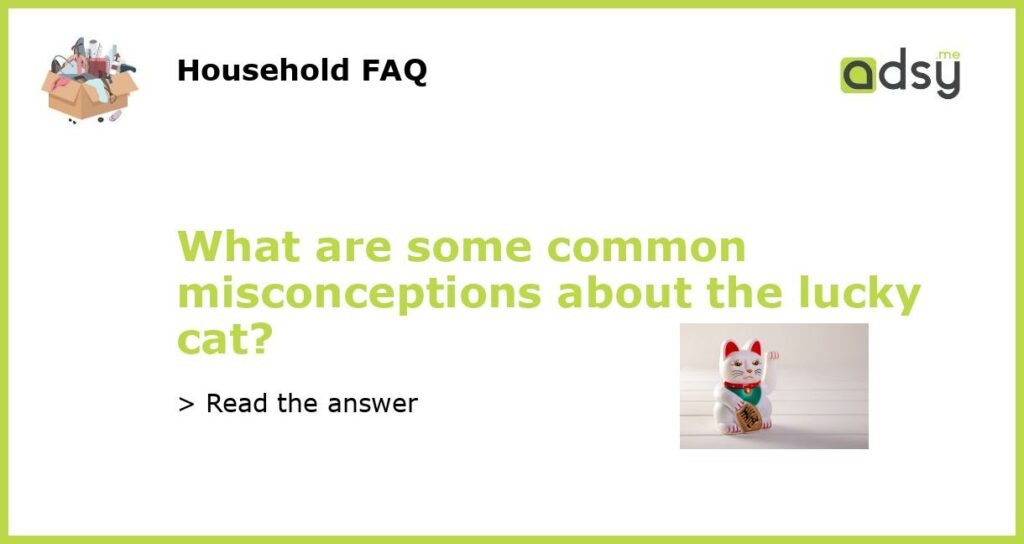The lucky cat, also known as the Maneki-neko, is a popular Japanese figurine that is believed to bring good luck and fortune to its owner. It is often seen in businesses and homes, especially in Asian countries. However, there are many misconceptions surrounding this lucky charm. In this article, we will discuss some of these misconceptions and clarify the truth behind them.
Misconception 1: The Lucky Cat is a Chinese Invention
Contrary to popular belief, the Maneki-neko is not a Chinese invention. It actually originated in Japan during the Edo period (1603-1868). The first Maneki-neko figurine was made in Tokyo and quickly gained popularity throughout Japan. It was only later that the lucky cat became associated with Chinese culture due to its widespread use in Chinese communities.
Misconception 2: The Color of the Lucky Cat Determines its Meaning
Many people believe that the color of the lucky cat determines its meaning. For example, a white lucky cat is thought to bring happiness, while a black lucky cat is believed to ward off evil spirits. However, this is not entirely true. While certain colors may be more popular than others, the meaning of the lucky cat is not solely determined by its color. The most important aspect of the lucky cat’s meaning is its gesture – a raised paw is believed to attract money and good fortune, while a lowered paw is meant to bring in customers.
Misconception 3: The Lucky Cat Always Has One Raised Paw
Another common misconception is that the lucky cat always has one raised paw. While this is the most popular pose, there are actually many different poses of the lucky cat. Some have both paws raised, while others have one paw outstretched to the side. Each pose has its own meaning, but the most common pose – one paw raised – is meant to beckon good fortune and wealth.
Misconception 4: The Lucky Cat is a Religious Symbol
Despite its widespread use in businesses and homes, the lucky cat is not a religious symbol. It is a purely cultural tradition that originated in Japan and has since spread to other parts of Asia and the world. The lucky cat has ties to Japanese folklore and mythology, but it is not associated with any particular religion. In fact, the lucky cat is often seen in businesses that are not religiously affiliated, such as restaurants and stores.
Misconception 5: The Lucky Cat Brings Instant Wealth and Good Luck
One of the biggest misconceptions about the lucky cat is that it brings instant wealth and good luck. While the lucky cat is associated with prosperity and fortune, it is not a magical talisman that can solve all of your problems overnight. The lucky cat is meant to be a symbol of good luck and a reminder to stay positive and optimistic. Its true power lies in its ability to inspire and motivate, rather than in any supernatural abilities.






